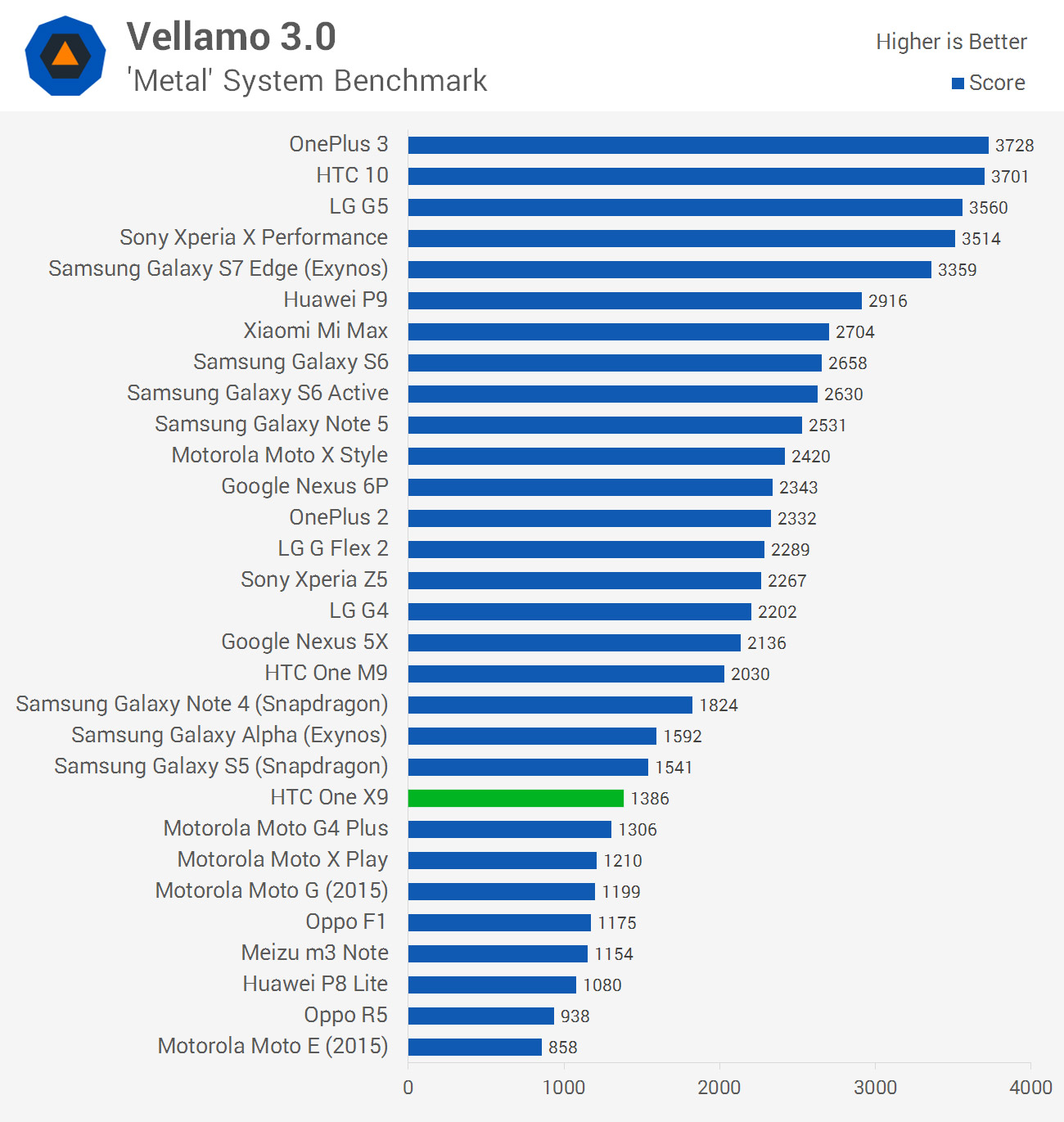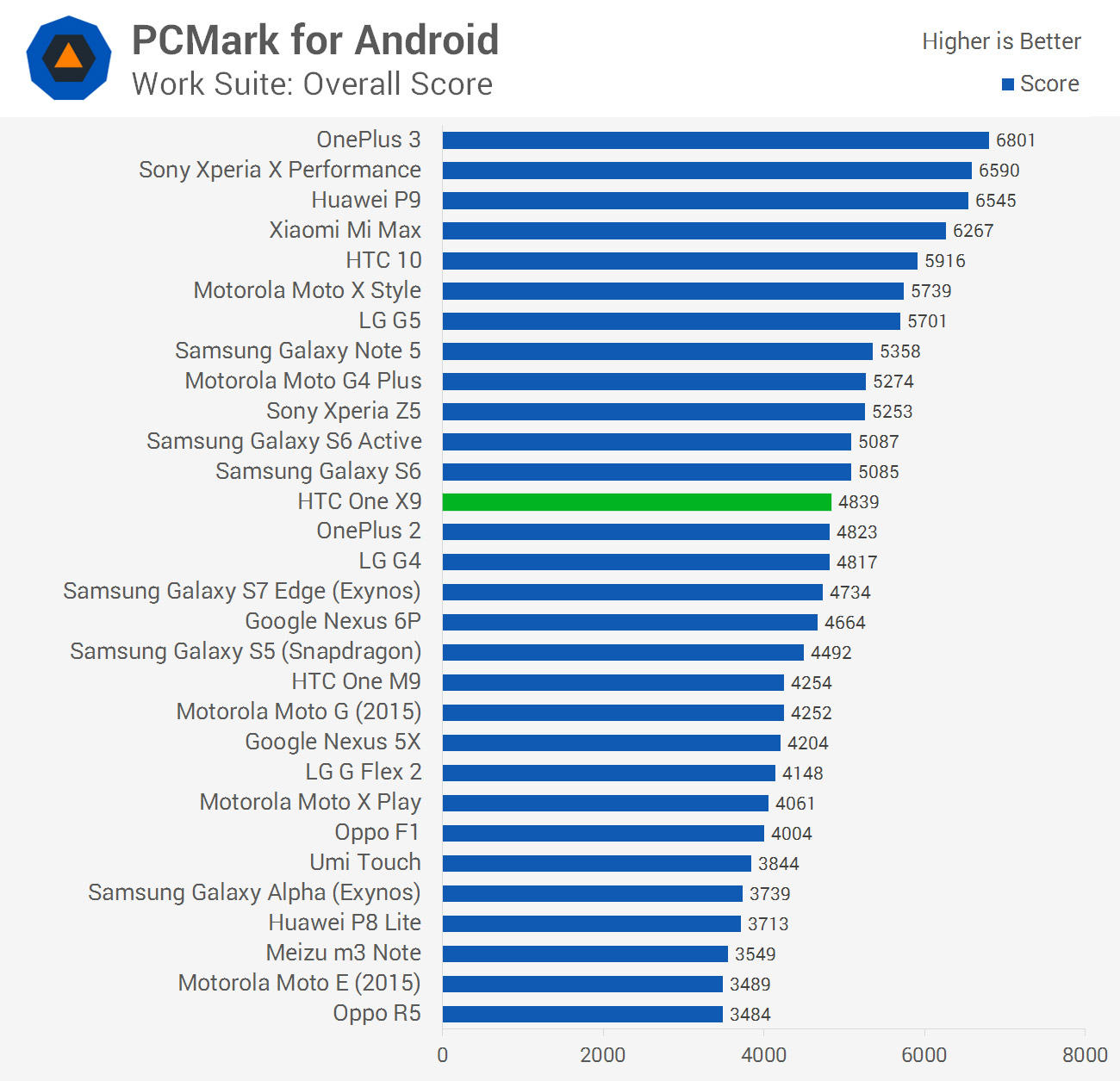Hardware Overview and System Performance
Instead of using a Qualcomm Snapdragon SoC, HTC has opted for MediaTek silicon in the HTC One X9. This smartphone packs a MediaTek Helio X10 (MT6795) SoC, which is an octa-core design that's comparable to Qualcomm's Snapdragon 617. In other words, this 28nm SoC is still firmly a mid-range chip that's most suited to 1080p applications.
The Helio X10 features eight ARM Cortex-A53 CPU cores all with the same 1.95 GHz maximum clock speed. This is an upgrade on the entry-level Helio P10, which is also an eight-core design, but uses a big.LITTLE arrangement with four cores at 1.0 GHz and four at 1.8 GHz. In other words, the Helio X10 provides a CPU clock speed boost across the board. It's also higher clocked than the Snapdragon 617: another octa-core design with A53 cores.
On the GPU side we're looking at a PowerVR G6200 clocked at 700 MHz. This is a really odd GPU to use, considering PowerVR's Series 6 Rogue GPUs were first spotted in 2013, however as a relatively high-end part at the time it should suit this mid-range handset well.
For memory, we're looking at 3 GB of 933 MHz LPDDR3 on a 64-bit bus, providing 14.9 GB/s of bandwidth. This phone comes with 32 GB of internal storage as standard, plus microSD expansion, so there should be enough free space out of the box for many apps and games.
The One X9 packs Category 4 LTE support on six FDD and four TDD bands, along with quad-band HSPA. This phone is configured for use in Europe and Asia Pacific, so there's only limited support for North American bands. You'll also get Wi-Fi 802.11a/b/g/n/ac on 2.4 and 5.0 GHz, Bluetooth 4.2, A-GNSS/BDS, and NFC.
The past few times I've used phones with MediaTek SoCs I haven't been all that impressed, but I had no such concerns with the HTC One X9. Sure, this handset isn't the fastest on the market, because it doesn't use a high-end chip. However, the Helio X10 is a decent mid-range SoC, thanks mostly due to its very high A53 CPU clock speed, and 3 GB of RAM helps a lot during multi-tasking. App loading performance could be improved, though in-app performance was smooth and stutter free.







In CPU-limited workloads, the HTC One X9 is around 13% faster than the Motorola Moto G4 Plus, which uses a Snapdragon 617 SoC. Just looking at the four fastest cores in each SoC, the Helio X10 is clocked 33% higher than the S617, so I didn't see actual performance gains in line with the increased clock speeds. This is disappointing, but not surprising considering MediaTek's apparent lack of optimization compared to Qualcomm or other SoC vendors.
It's also worth noting that in some general system tests like PCMark, the One X9 was actually outperformed by the Moto G4 Plus.
At the One X9's price point, it's also competing against older flagships like the Google Nexus 5X, which use a Snapdragon 808 SoC. The Nexus 5X is around 19 percent faster in CPU workloads, although I saw gains as high as 119% in some tests. The Snapdragon 810, seen in some other older flagships, is around 30 percent faster on average.

